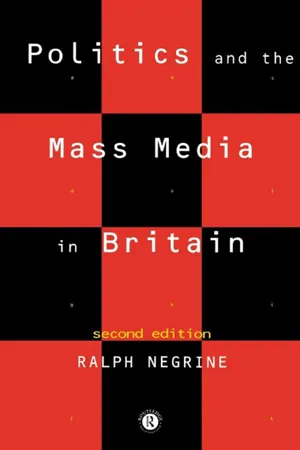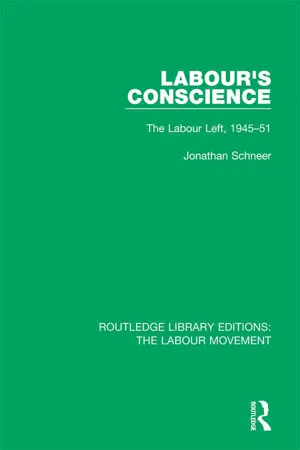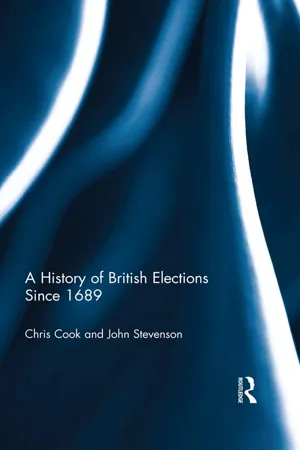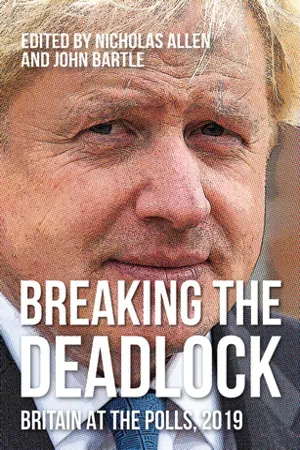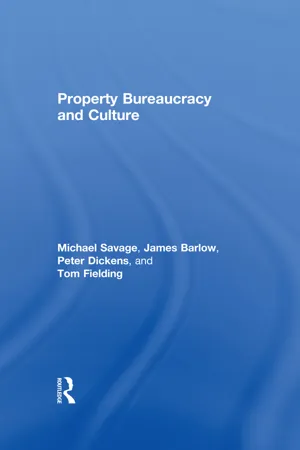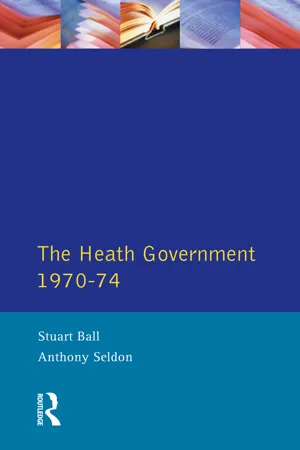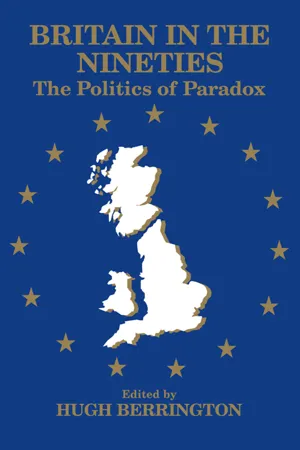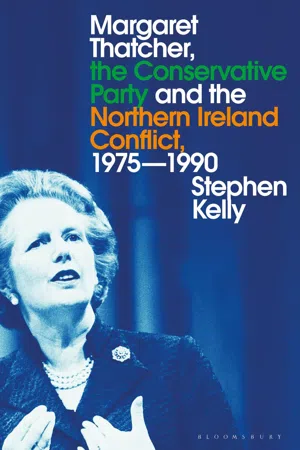History
General Election 1979
The General Election of 1979 in the United Kingdom resulted in a victory for the Conservative Party, led by Margaret Thatcher. This election marked the beginning of a new era in British politics, as Thatcher's government implemented significant economic and social reforms. The election is often remembered for its impact on the country's direction and the subsequent changes brought about by Thatcher's policies.
Written by Perlego with AI-assistance
Related key terms
8 Key excerpts on "General Election 1979"
- eBook - ePub
- Ralph Negrine(Author)
- 2003(Publication Date)
- Routledge(Publisher)
and non-media influencesAs the Introduction suggested, a general election is only a small part of a political and historical process. To study three or four weeks in the life of a government and an electorate may be to attach undue importance to a fraction of the process. Sometimes elections are preceded by events which have a significant impact on the outcome of those elections themselves—so much so that the result is never in doubt. This happened in 1979 and also in 1983.The May 1979 election was preceded by the ‘winter of discontent’—a period of public service pay disputes—which greatly damaged the Labour Party and ensured that the Conservatives entered the election campaign 21 percentage points ahead in the public opinion polls. The election gave the Conservatives a 7.2% lead over the Labour Party. A similar pattern of leading in the polls prior to the commencement of the campaign, and of retaining that lead throughout the campaign, was in evidence in 1983.Prior to the Falklands conflict in 1982, the Conservative Party’s popularity had slumped; its support stood at 28%, behind Labour’s 30% and the Alliance’s 42%. Margaret Thatcher was ‘the most unpopular PM since polls began’, with 64% dissatisfied with her leadership. By June 1982—after cessation of hostilities in the South Atlantic—the party’s support stood at 47% and Thatcher’s satisfaction rating was up to 51%.15 The Conservatives entered the campaign 15.8 points ahead and won with a 15.2% lead over the other parties.In 1987, just as in 1979 and 1983, the Conservative Party entered the election period in the lead. Before the election date was announced, the five major national polls reported that the Conservatives averaged 42% of the vote with Labour at 30.5% and the Alliance at 25.5%.16 - eBook - ePub
Labour's Conscience
The Labour Left, 1945-51
- Jonathan Schneer(Author)
- 2018(Publication Date)
- Routledge(Publisher)
2Helpful as previous work on the general election has been, we may push our knowledge further by focusing upon the Labour Left during the campaign. On the most basic level this helps fill a gap in the literature; since, despite its significant role during the contest, historians never have considered the Labour Left’s impact. Moreover, the lessons and conclusions which many left-wing Labourites derived from the general election were to influence significantly their later behavior. In fact, when one views it in the refracted light of subsequent Labour Left disillusionment with Attlee’s governments, the 1945 election takes on new meaning. That light endows the campaign with a poignancy and irony missing from other accounts. It makes a more nuanced interpretation of this crucial event possible. The paradox of 1945, as I hope to demonstrate, is that it set the stage for Labour’s great achievements under Attlee’s Prime Ministership—but also for Bevan’s climactic Labour Left rebellion of 1951.3II
The background to the general election is uncontroversial, but there is one point of significance which often has been forgotten. The flat-out contest for supremacy between Labour and Conservatives which took place during the campaign might not have occurred, had it not been for the Labour Left.When Churchill announced the general election neither he nor a majority of his Cabinet wanted an end to the political truce that had been more or less in effect in Britain since the beginning of the war. Most of the Labour ministers continued to hope that the coalition government would remain in power at least until victory over Japan had been won; not knowing of the atomic bomb, they thought this victory might take several years to achieve. That Labour fought the general election not to improve its position against the Conservatives in the coalition, but in hopes of achieving outright victory, was largely a result of pressure emanating from the party rank and file, most forcefully articulated by Harold Laski, Aneurin Bevan and Emanuel Shinwell, representatives of the Left on Labour’s National Executive Committee. They convinced Herbert Morrison and William Whitely, Labour’s chief whip in the House of Commons, that the party would not accept continued coalition government. Attlee, Bevin and Dalton, who argued to the contrary, were outvoted at a meeting of Labour’s National Executive Committee. Thus the most successful general election in Labour Party history was due in part to a victory of the rank and file, and of the Labour Left, over the party leaders.4 - eBook - ePub
- Chris Cook, John Stevenson(Authors)
- 2014(Publication Date)
- Routledge(Publisher)
For the Liberals themselves, the election was an unmitigated disaster: their representation in Parliament was reduced from nine MPs to six; their plight was surpassed only by that of the Communist Party which received a derisory 0.07 per cent of the poll. Once again, the results could be claimed as a moral victory for both the major parties. The Conservatives had won a majority of parliamentary seats contested; the Labour Party, though defeated, had won more votes than ever before and for the third time since the war had secured more votes in an election than the Conservative Party.The election also marked a period of two-party electoral politics in Britain that was to last until the 1970s. As Table 7.1 shows, from 1951 to 1970 the vote of the two main parties never fell below 87.5 per cent.Table 7.1 Major vs. minor parties’ share of votes and seats, 1951–70Con. and Lab. combined Third and minor parties Year % of total vote % of total vote % of total vote % of total vote 1951 96.8 98.6 3.2 1.4 1955 96.1 98.6 3.9 1.4 1959 93.2 98.9 6.8 1.1 1964 87.5 98.6 12.5 1.4 1966 88.8 97.8 11.2 2.2 1970 89.4 98.1 10.6 1.9 Source: Butler, British General Elections, 79 .Given the strength of the Labour vote from 1945 to 1951, few could have realised that the 1951 election would inaugurate a long period of 13 years of Conservative rule during which Labour suffered serious infighting and the Liberals (at least until the Orpington by-election of 1962) remained on the fringes.The General Election of 1955
The background
The Conservatives entered the 1955 election against a background of many favourable conditions giving them cause for optimism. The resignation of Churchill as prime minister on 6 April 1955, and the succession of Sir Anthony Eden, provided the ideal opportunity to call a snap election against a background of rising living standards, an electioneering Budget and the end of the rationing of the immediate post-war years. Moreover the Conservatives could make much capital out of Nye Bevan’s resignation back in April 1951 – pointing to the (unlikely) scenario of the Bevanites taking control of the Labour Party.Moreover, the by-elections of 1951–55 had indicated popular support for the Conservatives. Not a single one had been lost by the Government since 1951, and South Sunderland had been gained from Labour in 1953. The 1955 municipal elections had produced good results for the Government and the opinion polls showed a majority in favour of continuing Conservative rule. The election campaign was the quietest and most uneventful in recent history. With the Conservative programme United for Peace and Progress - eBook - ePub
Breaking the deadlock
Britain at the polls, 2019
- John Bartle, Nicholas J. Allen(Authors)
- 2021(Publication Date)
- Manchester University Press(Publisher)
7 2019: a critical election? Jane Green When we ask whether 2019 was a critical election, what are we really trying to establish? 1 This question is about whether an enduring electoral realignment has taken place in Britain, and, if so, how the realignment has taken place and whether the decisive point in that process was the 2019 general election. The question demonstrates how we might easily misunderstand the 2019 British general election, a contest that Boris Johnson sought to ‘get Brexit done’ and which finally secured the Conservative parliamentary majority necessary to pass the EU withdrawal agreement. The question also requires us to think about any ‘realignment’ in the context of the long-term trend in partisan dealignment in the electorate. 2 Has an electoral alignment provided a new form of stability in electoral behaviour, replacing the once deeper, socialised party attachments that used to characterise British elections? The question is also important for our national political parties. Interpreting what happened – and did not happen – in the 2019 election will determine how they respond and what happens next. Parties implement the lessons of electoral victories and losses. They adapt their strategies and policies and change leaders. Learning the right lessons, therefore, has important long-term political consequences. The wrong lessons are likely to be learned if attention is focused only on the outcomes of elections – for example, the Conservatives’ loss of their majority in 2017 (characterised as Theresa May’s ‘disastrous’ campaign) and their success in winning a comfortable majority in 2019 (characterised as Boris Johnson’s ‘triumphant’ campaign). Such a limited comparison risks writing off the underlying changes that were highly significant in the one and exaggerating the degree to which one dramatic change affected the other - eBook - ePub
- Michael Savage, James Barlow, Peter Dickens, Tom Fielding(Authors)
- 2014(Publication Date)
- Routledge(Publisher)
et al. 1985: Table 3.2).Managerial voting patterns have also swung, less dramatically, to the Conservatives. In 1945 less than half voted Tory, but this increased to 65 per cent by 1951 and, as we have seen, was around 60 per cent in 1987, when the overall Tory vote was much smaller.The evidence does suggest that there has been a significant transformation of middle-class political allegiances since 1945. Until the Second World War – and beyond – the professionals were clearly the most Conservative inclined of the middle classes, but they are now the least. The reasons for this, we contend, lie in the changing politics of the Conservative Party and its relationship to the state. ‘Thatcherism’ marks a particularly important moment here.The significance of‘Thatcherism’ lies in its re-constitution of Conservatism. The Tory Party before the 1970s was a party concerned to defend and legitimate the state. This is not to say that it always supported public spending: to give only one example, in the inter-war years the National Government which it dominated presided over serious cuts in public benefits. Rather, it supported the strategic role of the state in maintaining tradition and hierarchy, and after its return to office in 1951 this led to its support for most of the Labour Government’s reforms which increased the role of the state in economic management and welfare provision. Thatcherism, however, marked an end to Tory support for this ‘social democratic’ Butskellite consensus which centred on the common support for a welfare state, and moved towards a market-oriented, anti-statist politics, seen by some as linked to the development of a ‘Post-Fordist’ economy (Jessop et al. - eBook - ePub
The Heath Government 1970-74
A Reappraisal
- Stuart Ball, A. Seldon(Authors)
- 2014(Publication Date)
- Routledge(Publisher)
The gainers from the election were the minor parties. The number of Liberal MPs increased from 11 in the outgoing Parliament to 14, while MPs for ‘other’ parties increased from 8 to 23. The election was a significant step to multi-partyism in British elections. In general elections between 1950 and 1970 inclusive, an average of only 10 MPs were not connected to either the Conservative or Labour Parties. In 1974 the figure increased to 37.The election was also a turning point in the postwar history of the two-party system. The substantial falls from 1970 in the vote share for the two main parties (Conservatives 8.6 per cent and Labour 5.8 per cent) were the biggest postwar reductions for each party. Labour’s only consolation was that it did less badly than the Conservatives. The performance of the other parties reflected the electoral disillusionment with the two main parties. The Liberals increased their share of the vote from 7.5 per cent to 19.3 per cent or 6 million votes. In Scotland, the Nationalists increased their vote share from 11.4 per cent to 21.9 per cent. The two-party system has never recovered its former hold on the electorate. In general elections between 1945 and 1970, the average aggregate vote for the two main parties was 90 per cent. In 1974 it fell to 75.4 per cent, and has remained near that figure in subsequent general elections. Only the disproportionate effects of the first-past-the-post electoral system has preserved the dominance of the two main parties in the House of Commons.The election did not produce strong government. All parties immediately began making preparations for the general election which would inevitably follow. A week after the election, the NUM executive and coal board agreed a new wage offer, on the basis of a report from the Relativities Board. The miners accepted the offer and returned to full working on 11 March.The election of February 1974 rapidly became overlaid with myth. One myth, the staple of Labour Party communications for the rest of the decade, was that Heath was set on a confrontation with the miners. That confrontation was to be contrasted with Labour’s social contract with the unions. The vision of the dark nights and the three-day week in the last weeks of the Heath administration became part of election folklore, just as the Conservatives have used the ‘Winter of Discontent’ to remind voters of life under the 1974–79 Labour government. It seems fated to go down in history as a ‘Who Governs?’ election. This grossly distorts Heath’s position, but may be a measure of his failure in terms of communication. - eBook - ePub
Britain in the Nineties
The Politics of Paradox
- Hugh Berrington(Author)
- 2014(Publication Date)
- Routledge(Publisher)
Table 1 shows, however, an almost unprecedented electoral tidal wave swept Labour to power and also returned 46 Liberal Democrats to the House of Commons. Although they took many people by surprise, it cannot be said that there is anything intrinsically paradoxical about the results of these two elections. When they are placed in the context of recent studies of voting behaviour in Britain, however, there clearly are paradoxical elements.The major report on the 1992 election by the British Election Study team was entitled Labour’s Last Chance? reflecting a commonly held view that very serious obstacles stood in the way of Labour’s ever again winning an election. Although the authors argued that changes in the social structure did not condemn the party to inevitable defeat in future, these changes meant that Labour was ‘trying to sail against the current’ in its efforts to win.1 In similar vein, Richard Rose, surveying election results and social trends since 1964, suggested that Labour was in structural decline.2 Yet five years later in 1997 – with social changes having continued to favour the Conservatives in the interim – Labour scored an overwhelming victory. Moreover, the incumbent Conservatives were crushed despite the economy being relatively buoyant, contrary to the received wisdom about the positive relationship between economic performance and the popularity of governments in Britain and elsewhere.3 Before examining the 1997 election in more detail, however, it is worth considering the four Conservative election victories from 1979 to 1992. The relative stability of Conservative support in this period is also somewhat paradoxical since, according to the dominant view in British voting studies, it had been preceded by a ‘decade of dealignment’.4TABLE 1GENERAL ELECTION RESULTS 1992 AND 1997Note: Figures for vote share refer to Great Britain only while those for seats refer to the United Kingdom as a whole.THE DEALIGNMENT THESISThere is a broad (but not universal) consensus among students of voting behaviour that the modern British electorate can be characterised as ‘dealigned’. Dealignment refers to two related, but conceptually distinct, processes. Early voting studies, in the 1950s and 1960s had suggested that party support closely reflected major social cleavages. There was a clear alignment between the social groups to which voters belonged (especially their social class) and the party they voted for. From the 1970s, however, although new cleavages such as race emerged and regional differences became more important, the link between social characteristics and party choice became steadily weaker. In particular, on most measures, class voting declined. The Alford index of class voting,5 for example, was 42 in 1964 and 43 in 1966. For the four elections of the 1970s the average index score was 32; in both 1983 and 1987 it was 25 and in 1992 the score was 27. Most commentators take these figures as evidence of a ‘class dealignment’.6 - Stephen Kelly(Author)
- 2021(Publication Date)
- Bloomsbury Academic(Publisher)
Part Three Second-term in office, 1983–7Passage contains an image 7 The FitzGerald-Thatcher relationship and the evolution of Anglo-Irish relations, 1983–4 ‘… I’d like to do something about Ireland’: The resurrection of Anglo-Irish relations
The Conservative Party’s landslide victory at the 1983 British general election (held on 9 June of that year) was a personal triumph for Thatcher. In her own constituency of Finchley, Thatcher increased her majority to over 9,000. Although the Conservative Party’s national vote had fallen by nearly 700,000, to over 13 million, the Labour Party vote collapsed to a little under 8.5 million. In terms of a share of the percentage vote, the Conservative Party had 42.4 per cent, the Labour Party 27.6 per cent and the Alliance 25.4 per cent. The result meant that the Conservative Party won 397 seats; the Labour Party, 209; and the Alliance, 23. It was a staggering victory. Thatcher’s party secured an overall majority of 144 seats, the largest for either party since the Labour Party landslide of 1945. The result left Thatcher as the first leader of any British political party in the twentieth century to serve a full term and then increase her majority. Not only that, she was the first Conservative Party prime minister in the twentieth century to win two British general elections in a row.1Thatcher was re-energized by her election victory, immediately throwing herself back into her great task of rescuing Great Britain for an impending economic abyss. One of her first tasks was her decision to reshuffle her cabinet, a job she disliked. On this occasion, however, the task was made bearable because she had the authority to appoint whom she wished to the cabinet. Her most important move was her decision to appoint the free-market guru Nigel Lawson as chancellor of the exchequer. Sir Geoffrey Howe took over as secretary of state for foreign affairs and the commonwealth. William Whitelaw was appointed leader of the House of Lords and lord president of the council (an obvious demotion, which was sweetened by making him a viscount and retaining him as de facto deputy prime minister). Lord Hailsham remained as lord chancellor. Michael Heseltine, one of Thatcher’s main critics within the cabinet, retained the defence portfolio. Norman Tebbit2 was appointed secretary of state for employment. Cecil Parkinson took over as secretary of state for trade and industry. Leon Brittan became secretary of state for Home Department. Ian Gow, Thatcher’s ‘Unionist conscience’,3
Learn about this page
Index pages curate the most relevant extracts from our library of academic textbooks. They’ve been created using an in-house natural language model (NLM), each adding context and meaning to key research topics.
